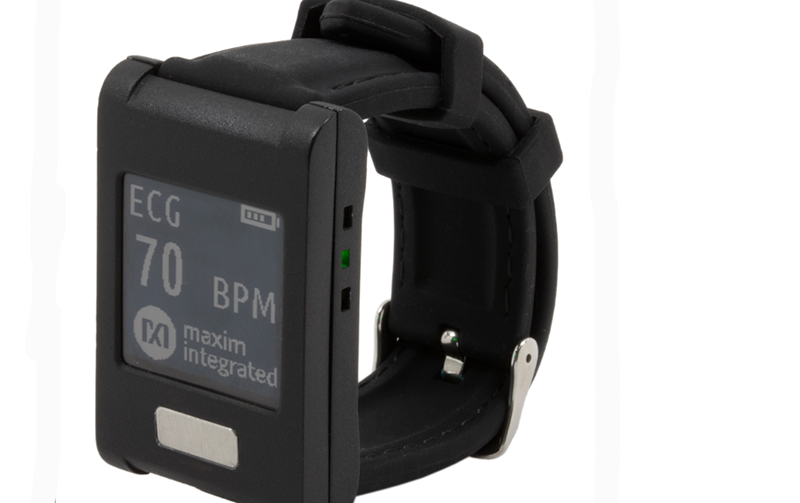When it comes to wearables, a wrist-worn device is always convenient. However, it is difficult to get ECG reading from the wrist. Additionally, getting accurate body temperature typically requires using a thermometer at another location. Integrated circuit maker Maxim Integrated has overcome these challenges through its proprietary sensor and health monitoring technology. It has built a wrist worn platform for designers to develop unique and highly accurate wearable devices that continuously monitor various health parameters.
Read more Maxim Enables a Healthier World with Health Band and ECG Monitor
The Health Sensor Platform 2.0 (HSP 2.0), also called the MAXREFDES101#, can monitor electrocardiogram (ECG), heart rate and body temperature to a wrist-worn wearable, saving up to six months in development time, said a press release.
“Patients and medical professionals are increasingly wanting more real-time exchange of accurate health data collected over an extended time frame, along with the ability to access this data from anywhere,” said Andrew Baker, managing director, Industrial and Healthcare Business Unit, Maxim Integrated. “Wearable and medical device manufacturers can turn to Maxim’s HSP 2.0 to create accurate, wrist-worn health monitoring solutions, shaving off up to six months of the typical development time.”
MAXREFDES101# is a unique evaluation and development platform in a wrist-worn wearable that demonstrates the functions of a wide range of Maxim’s products for health-sensing applications. This second-generation health sensor platform (a follow-on to the MAXREFDES100#) integrates a PPG analog-front-end (AFE) sensor (MAX86141), a biopotential AFE (MAX30001), a human body temperature sensor (MAX30205), a microcontroller (MAX32630), a power-management IC (MAX20303), and a 6-axis accelerometer/gyroscope. The complete platform includes a watch enclosure and a biometric sensor hub with an embedded heart-rate algorithm (MAX32664). Algorithm output and raw data can be streamed through Bluetooth® to an Android® app or PC GUI for demonstration, evaluation, and customized development.
Read more TAGecg 7-Day Wearable ECG Sensor: A Smarter, Simpler Path to Cardiac Diagnostics
Because HSP 2.0 is an open platform, designers can evaluate their own algorithms on the board. In addition, the modular format is future proof to quickly accommodate new sensors over time.
Key Advantages for Designers Include:
- Fast Time to Market: Fully working hardware and firmware with companion watch casing cuts design and validation time by up to six months
- High Accuracy: Only available solution to integrate clinical-grade ECG along with heart-rate and body-temperature measurements into a wrist-worn format
- Arm® Mbed™ Support: For efficient evaluation and rapid application prototyping, the Mbed environment provides a high level of abstraction to eliminate maintenance of software tools and provide an extensive library of open-source software













